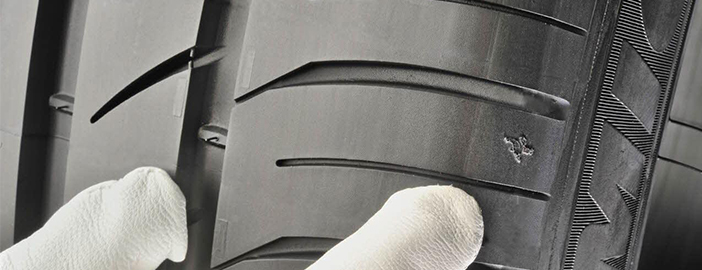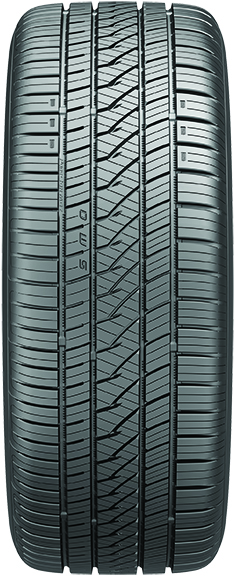Your Shopping Cart
Your cart is empty.
Subtotal ( items)
Instant Rebate Applied:
Promo Code Applied: ID.me Discount Applied:
Have a Promo Code?
Size:
Item
Item
Selected for:
/ each
Add-Ons
Wireless air pump capable of pumping up to 150 psi with 2000 MAH power bank.



Fully protect your clothes and vehicle interior during transportation of your tires. For Tires up to 31" tall and wheels up to 22".
Per sensor
Add TPMS Sensors
/per sensor
Please confirm the make, year, model and trim of the vehicle you want to purchase for:
How many sensors do you need?
The vehicle you have selected is not compatible with aftermarket TPMS Sensors.
Enter a different vehicle to add TPMS sensors

 Front Tire Size:
Front Tire Size:
 Rear Tire Size:
Rear Tire Size:
 Your Vehicle:
Your Vehicle:
Pros & Cons of Staggered Fitment

Attractive Design

Improved Handling

Improved Cornering
Bumpier Ride
Poor Traction in Snow
How do I find my tire size?



Need help?
 Your Vehicle:
Your Vehicle:
Pros & Cons of Staggered Fitment

Attractive Design

Improved Handling

Improved Cornering
Bumpier Ride
Poor Traction in Snow
How do I find my tire size?



Need help?
Pros & Cons of Staggered Fitment

Attractive Design

Improved Handling

Improved Cornering
Bumpier Ride
Poor Traction in Snow
Need help?
Need help?
How do I know if I have an LT tire?

 Your Vehicle:
Your Vehicle:
Sorry, we could not find any available
wheels for your sizing selections.
Need help?
Tire Wear Bar Indicators: What Tread Markers on Tires Mean
By Tire Agent Staff
December 13, 2021
Today's tires have built-in features that help drivers know when it's time to replace tires, before it's too late. Newer vehicles have electronic tire safety pressure monitoring (TSPM) systems in the form of dashboard alerts to let drivers know when tire pressure is low. A tire that continues to lose air pressure might need to be replaced (or repaired).
There are other factors that determine when tires should be replaced, but most modern tires have built-in visual indicators that let drivers know it's time to go. These are called tire wear bars, and they are built in to the tire itself, spaced evenly throughout the tire's tread so that as the tire wears closer to that 2/32" mark, the war bar becomes more visible. When tread is even with the wear bar, it's time to replace it.
The US Department of Transportation (DOT) says that tires with a tread depth of 2/32 of an inch or less are not safe and should be replaced.
What Are Tire Wear Bars?
Tire wear bars are also called driving safety indicators, tire depth bars, tire change bars, tire wear indicators, quick view indicators and in some models, they're called tire wear dimples because they are very small dimple-like indentations. Because there is no industry or government standard for what tire wear indicators look like, it varies from manufacturer to manufacturer.
Michelin, for example, uses its Michelin Man logo to help drivers find their wear bars. The tiny logo is etched into the edge of the tire, as this photo shows.
Source: Michelin
Continental Tire uses a unique technique in some tire all-season tire models. They stamp DWS into the tread of their tires, which stands for dry, wet, and snow. When the S is no longer visible, the tire is not safe for snow driving. When the W is no longer visible, the tire is not safe for wet conditions. And, when the D fades, it's time to replace the tire.
Tire Wear Indicators FAQ
Where can I find tire wear bars?
Different manufacturers place them in different places, so it depends on who makes them. Generally, the tire wear indicators are placed throughout the circumference of the tire, evenly spaced in the grooves. In fact, when you are inspecting your tires, we recommend that you carefully check the entire surface of each tire, as tires can and do wear unevenly.
If any portion of a tire is at 2/32" or lower, it is time to replace it, even if other parts of the tire are deeper than 2/32".
Can I drive on tire tread bars?
Yes, you can drive on tire tread bars. But as soon as they become more visible and closer to the outer tread, it's time to start shopping for replacement tires.
Should tires be replaced before or after tire tread bars show?
When your tire tread bars become close to smooth with the outermost tread of your tire, it's time to start shopping for tires. The safety rule says that tread depth that is 2/32" inch or less is considered a "bald" tire, and it's time to replace it. However, you do not need to wait for your tire to wear that low! In fact, we recommend that when your tire tread gets to 4/32", it's time to start tire shopping.
In this video from Bridgestone, they explain how tire wear bars can be found and what they should look like when they are new versus when it's time to replace the tire.
What distance are wear indicator bars set?
Tire wear bar indicators are not set for distance. They're set for tread wear. On average, a driver puts 10,000 to 15,000 miles on a car every year. For a tire with an expected mileage of 60,000, then the tread bar indicator will start to show around year 4.
What does it mean when wires are showing on tires?
It means stop driving on them, immediately. When bare tires have exceeded their treads, you might see the fibers that were used to strengthen the tires when they were new.
If you've got white threads or some other type of thread showing through the rubber of your tire, you're in danger. The tire is beyond its usability and could blow, causing a crash. It is not safe to drive on tires with visible tread wires.
How to Qualify for the $50 Offer
- Add items to your cart and begin checkout.
- Select PayPair and apply for financing.
- If you’re approved by a participating lender, you’ll see a $50 promotional rebate applied to your order total.
-
To receive the $50, you must:
- Complete your purchase with a qualifying lender,
- Agree to the payment terms,
- And make the required number of consecutive on-time payments, as specified by the lender.
Note: Offer available only through select lenders. Additional eligibility requirements and conditions apply. Rebate may be issued after verification of qualifying payment activity. Terms subject to change.
How to Purchase Tires and Wheels
With a Payment Plan
Tire Agent's payment plans make it easy to get the best partial or full set of tires and wheels for your vehicle.
It's fast, secure and won't affect your credit score
Match with multiple lenders
Why Choose PayPair?
PayPair’s Partners and Plans

No Money Down

No Money Down

No Credit Needed*

No Money Down

$1 to Start!*

No Money Down

No Credit Needed*

$1 to Start!*

No Money Down
Other Payment Plans

$0 to Little Down

Pay with your bank account

Simplified checkout experience

Faster and easier than using cards or cash

Simplified checkout experience

Faster and easier than using cards or cash
*SNAP: The advertised service is a lease-to-own agreement provided by Snap RTO LLC. Lease-to-own financing is not available to residents of Minnesota, New Jersey and Wisconsin. NO CREDIT NEEDED: Not all applicants are approved. While no credit history is required, Snap obtains information from consumer reporting agencies in connection with applications, and your score with those agencies may be affected. PAYMENT PLAN: The standard plan consists of renewable lease terms. To exercise an early ownership, consumers must make regular payments on time and schedule additional payments via the customer portal or by contacting Customer Care at 1-877-557-3769. KATAPULT: The Promotional Initial Payment (plus any applicable taxes and fees) is due at lease signing. Your lease-purchase payment amount will be determined after you select your product(s). You will not acquire ownership of the product(s) if the total amount necessary to acquire ownership is not paid. The Promotional Initial Payment does not reduce the cost of the lease-purchase agreement. The Promotional Initial Payment is only available when shopping at Tire Agent through the Katapult mobile app and at Tire Agent’s website. Product pricing subject to change and availability. Disclosure: 90-day early purchase option (EPO) terms and conditions apply: 90-Day (3 months in CA) You can buy out your lease-to-own agreement within the first 90-days. This amount includes the cash price, plus the lease-to-own cost for the first 90-days. Taking advantage of the 90-day purchase option will save you the most money! PROGRESSIVE: Ownership by rental/lease agreement with Progressive Leasing costs more than the retailer’s cash price. Select items only. Cancel or purchase early at any time. Not available in MN, NJ, VT, WI, WY. Progressive Leasing obtains information from credit bureaus. Not all applicants are approved. Standard agreement offers 12 months to ownership. 90-day purchase options cost more than the retailer’s cash price (except 3-month option in CA). To purchase early or to cancel lease, you must call 877-898-1970. Retailer cannot activate early purchase options.


